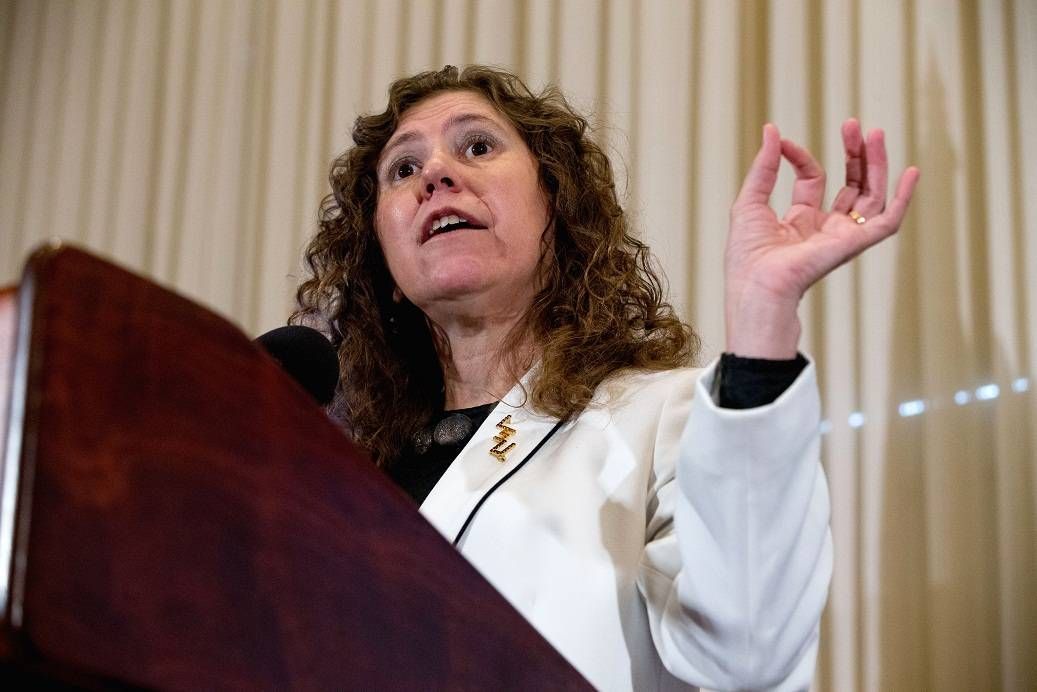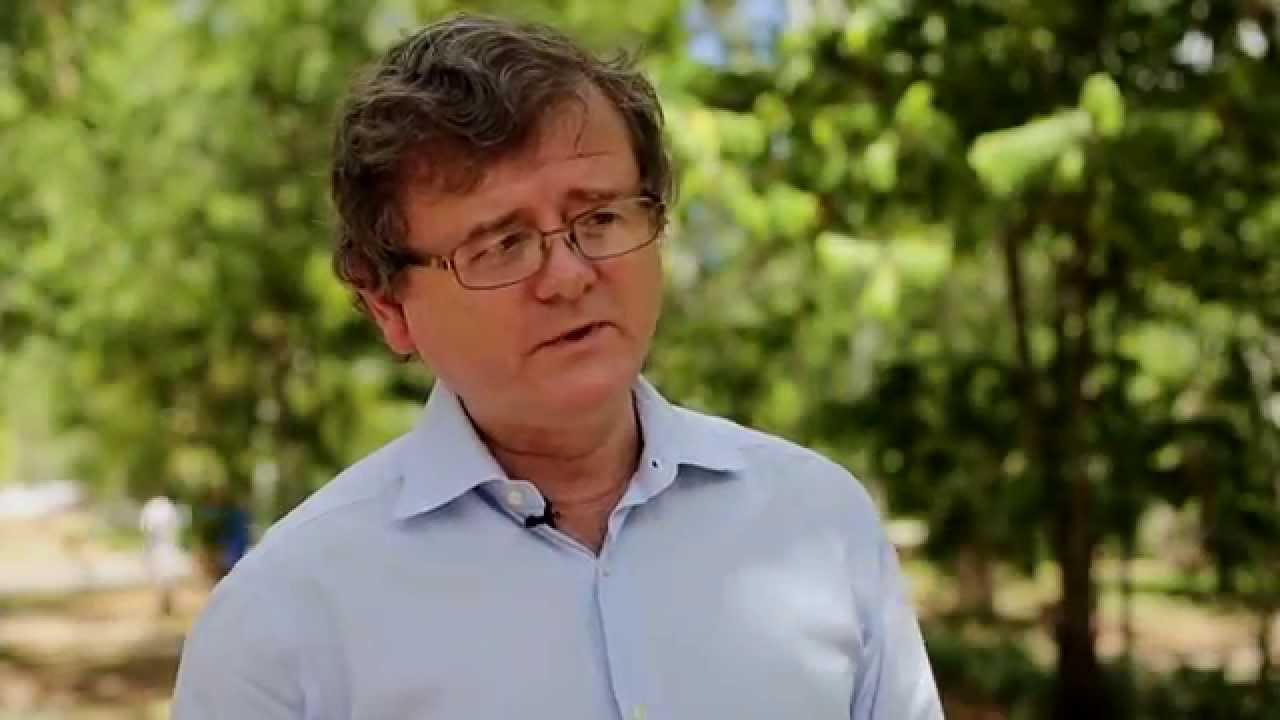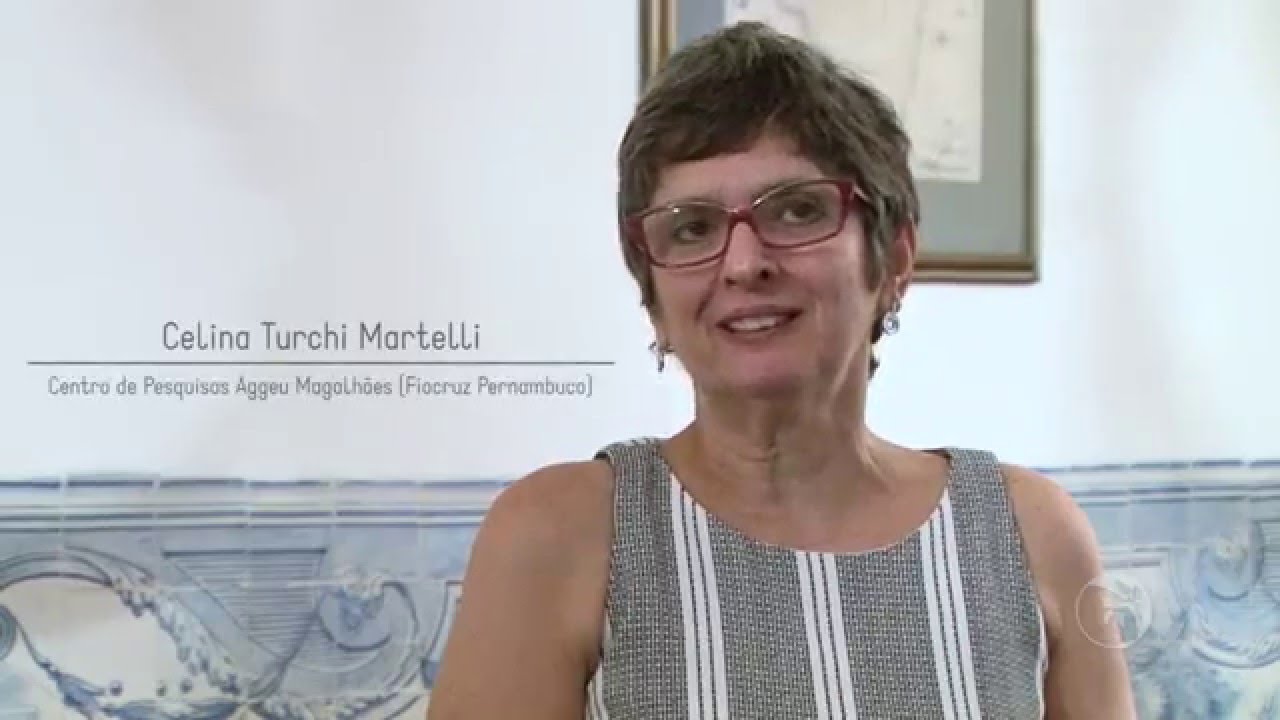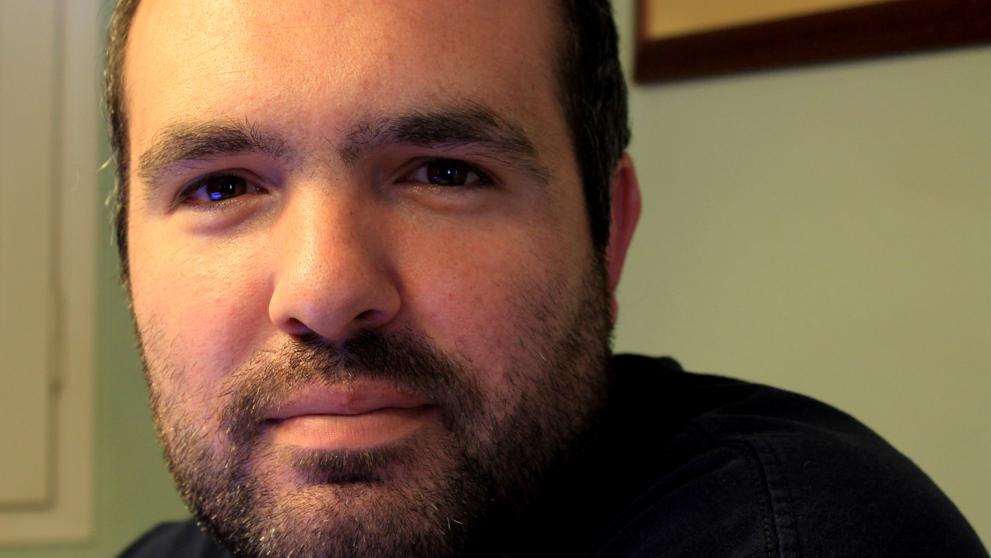Nature magazine named "Ten People of the Year" in Science 2016

The authoritative scientific journal Nature published a list of ten people who had the maximum impact on the development of science in 2016. This is not the first list published by the magazine - it is compiled annually. Among people influencing science, the journal names not only scientists. This list may include politicians, artists, and public figures. But more, of course, scientists.
Last year, for example, the list included superconductors specialist Mikhail Yeremets, head of the New Horizons space mission Alan Stern (as part of this mission, Pluto and his satellite Charon were studied). In addition, the diplomat Ali Akbar Salehi, who contributed to the achievement of a nuclear agreement on Iran, was named the man who had a significant impact on science last year. Who did Nature consider the most influential people in science this year? Let's get a look.
Gabriela Gonzalez, physicist
Gonzalez - Program Manager for the Detection of Gravitational Waves
')

Physicist Gabriela Gonzalez is now serving as spokesperson for the LIGO international collaboration, which announced the discovery of gravitational waves in the past year. She has been engaged for a long time (and is still engaged) in coordinating the work of groups of scientists working in different countries of the world. Among others, specialists from Italy who worked with the Virgo interferometer are also noted. Gonzalez has already announced that in 2018 she is going to resign as a spokeswoman and take up pure science. In 2017, her contract with the said organization expires.
The international scientific community LIGO (English LIGO Scientific Collaboration, LSC) is a growing group of researchers every year: about 40 research institutes and 600 individual scientists are working on analyzing data from LIGO and other observatories. The collaboration also includes two research groups from Russia: the group of V.P. Mitrofanov (Department of Oscillation Physics, Faculty of Physics, Moscow State University, Moscow) and the group of Academician of RAS A.M. Sergeeva (Institute of Applied Physics, RAS, Nizhny Novgorod).
By the way, the talents of Gonzalez are not limited to organizational work. She began her scientific activity as a theoretical physicist — in any case, her postgraduate work concerned precisely the sphere of theoretical physics. But later she switched to experimental physics, and achieved success in this field. Her colleagues call Gonzalez a first-class scientist.
As for her work at LIGO, Gonzalez says that she was engaged in “a little bit of everything”. She also worked with scientific data for quite a long time, but more, of course, she performed administrative functions, bringing together isolated parts of the work of other scientists.
Demis Hassabis, developer
DeepMind Creator, AlphaGo Developer

This specialist has been working closely in the field of artificial intelligence for a long time. It was he who founded the startup DeepMind , which is now owned by Google. Let me remind you that the development of DeepMind, which was named Alpha Go, defeated a person in the game of go, which was considered inaccessible to the “understanding” of computer systems.
DeepMind Hassabis founded only after he defended his doctoral degree in neurobiology. This happened in 2010.
DeepMind is now a standalone unit within Google. The staff of this unit are engaged in improving the capabilities of their offspring, a weak (so far) form of AI. Thanks to DeepMind and machine learning, for example, Google was able to reduce energy consumption in its data centers by 15%. But this is only an intermediate stage. Hassabis has ambitious plans for the future.
Which ones? He does not tell yet, but Hassabis is sure that a strong form of AI will appear in the not-so-distant future.
Terry Hughes, Coral Specialist
Researcher who discovered a problem with the corals of the Great Barrier Reef

For many years, Hughes has been researching corals, particularly those that make up the Great Barrier Reef in Australia. Back in 2008, the scientist spoke about the threat of the death of most corals in this region. Now he and his colleagues were convinced that the predictions were correct.
In March of this year, flying over the Reef by plane, Hughes saw that a significant percentage of the coral reefs of the northern and central parts of the Great Barrier Reef are in an unsatisfactory condition. According to the scientist, on average, about 35% of corals are already dead or die.
The reason for the extinction is the weakening of the corals with the subsequent loss of the colored algae covering the reefs. In October, scientists conducted a more detailed study and it turned out that about 67% of the shallow-water corals in the northern part of the reef for about 700 kilometers have already died.
The main reason for the weakening, according to some experts, is global warming. “Bleaching” occurs only on the Great Barrier Reef, but also on the coral reefs of Hawaii, Papua New Guinea and Maldives. In the near future, this problem will only worsen.
Chemist Velders, chemist
Laid the foundation for an international agreement to protect the Earth’s climate

A researcher working in the field of atmospheric chemistry has developed provisions for an international agreement on the production and use of powerful greenhouse gases - hydrofluorocarbons (HFCs). These compounds are commonly used in air conditioning systems.
He, in fact, laid the foundation through which the signing of the relevant climate treaty took place. Most countries agreed to the elimination of HFCs in the production of cooling systems. True, India and several other countries have requested an additional four years to get rid of hydrofluorocarbons.
The signing of the contract took place on October 15 . By the way, Welders was part of a team of scientists who helped update the Montreal Protocol on substances that deplete the ozone layer. As of December 2009, 196 UN member states have ratified the original version of the Montreal Protocol. Not all countries have ratified every subsequent amendment.
After signing the relevant international treaty, the risk of increasing the use of HFCs, as is commonly believed, has become minimal.
Selina Martelli (CELINA M. TURCHI), physician
Opened the cause of the birth of children with microcephaly in Brazil

Selina Martelli was able to establish a link between the infection of humans with Zika virus and microcephaly. As for the Zika virus, it causes not too severe fever in humans. Earlier this year, the virus caused an outbreak of fever of the same name in Latin America. After that, in a number of regions, babies began to be born with microcephaly, a congenital defect, which is expressed in the fact that the child’s brain and skull are much smaller than the norm.
The consequence of this is the mental remains of the child, hearing and vision impairment. In fact, the epidemic of Zika virus has led to an outbreak of microcephaly.
Celina Maria Turchi Martelli is a specialist in infectious diseases. She addressed the problem of microcephaly at the request of the Minister of Health of Brazil. Initially, work was carried out only in the state of Pernambuco. “As an epidemiologist, I couldn’t imagine in a bad dream that microcephaly would become an epidemic,” says Turchi.
After scientists discovered a link between Zika and microcephaly , Turchi immediately approached colleagues, including epidemiologists, infectious disease specialists, pediatricians, and neurologists. The epidemic was stopped due to the hard work of all participants in the relevant research program.
Alexandra Elbakyan, a scientific Internet pirate
Created a Sci-Hub website that allows you to download free articles from scientific journals, for which you usually have to invest significant funds.

Alexandra Elbakyan, faced with the problem of access to scientific publications, decided to create a resource that would allow scientists and students all over the world to get free access to scientific knowledge, that is, to scientific publications. The resource created by Elbakyan allows anyone who wants to download articles from magazines for which an expensive subscription is required.
Currently this site already contains 60 million articles. Since the beginning of this year, the administration of the resource has counted more than 75 million downloads. In 2015, the same figure was about 42 million. The downloadable materials from Sci-Hub make up a significant proportion of downloads of scientific journal articles all over the world. This figure has already reached 3%.
“The difference between Sci-Hub and other projects is that while other sites (for example, AvaxHome) are manually uploaded by users, Sci-Hub is an automated script that downloads scientific articles from publisher sites. A person can copy a link to the scientific article that he needs, and Sci-Hub will download it itself and give it to the user, as well as upload the downloaded article to other resources (for example, Libgen). So the script has already downloaded about 20 million articles, and the work continues. Total scientific articles, according to various estimates, from 60 to 140 million. The goal is to download everything, ” Elbakyan said in an interview with Geektimes.
John Zhang, Specialist in Reproductive Medicine
Held the world's first procedure of artificial insemination with material from three parents

Chan became the first to transplant the mitochondria of a female donor into the mother's egg cell. The child, conceived by this procedure, was born in April of this year. All the necessary procedures had to be carried out in Mexico, since in many countries, including the United States, such methods are prohibited.
This procedure is described as an artificially assembled genome that allows you to conceive a child even if the mother suffers from genetic diseases. As for the project implemented in Mexico, the mother of the child is the carrier of a genetic disease called Leia syndrome. The procedure performed by Chan, allowed to avoid the inheritance of the disease by the child.
Chan does not work alone, but with a group of fellow enthusiasts. Their community even has its own name - New Hope. True, some doctors believe that the procedure is far from safe and can have negative consequences. Nevertheless, Chan supporters argue that the benefits of the “mitochondrial conception” method provide people with a reliable tool, saving the newborns and their parents from a number of problems.
Kevin Esvelt, a geneticist
Developed the CRISPR-Cas9 genome editing system

According to Esvelte, in his childhood he managed to get to the Galapagos Islands, the ones that Charles Darwin, the creator of the theory of evolution, had once visited. During his journey, he was amazed at the many species of living organisms and the speed of evolutionary changes in this region. He thought about the possibility of improving evolution. “I wanted to know what creatures might appear. And, honestly, I wanted to create my own, ”he said in an interview.
His gene editing technology really speeds up evolution. However, according to the scientist, this method can be dangerous, because if changes in the genome are unfavorable for the species as a whole, it can quickly become extinct.
Nevertheless, the CRISPR-Cas9 method is becoming more and more popular in the scientific community - scientists want to work with this effective tool without fear of consequences.
Guillem Anglada-Escude, astronomer
Opened with colleagues the exoplanet nearest to the Earth

He managed to open the Exoplanet Proxima b in Proxima Centauri orbit in Proxima Centauri orbit. This is a star that is just 4.2 light years away from the solar system. According to some scientists, the size of this exoplanet is almost equal to the size of the Earth, and the conditions prevailing on the surface, allow the existence of water in liquid form. Some astronomers believe that Proxima b is the closest planet to Earth that is suitable for life.
True, this planet rotates too close to its star, so there is a possibility that the red dwarf, Proxima Centauri, simply sterilizes the surface of this planet.
The fact is that the intensity of UV radiation during flares of a star near the surface of Proxima Centauri b is several orders of magnitude higher than the intensity of solar radiation near the surface of the Earth. Plus, there is the likelihood that the magnetic field of the planet due to the proximity of a star can shrink, which means it is worse to protect the atmosphere.
Elena Long

She is a nuclear physicist and transsexual. Long, according to Nature, has had a strong influence on the scientific community by fighting against discrimination of LGBT people in the scientific community. As you can see, in order to get into the top 10 people according to Nature, it is not always necessary to have fantastic achievements in a scientific career.
Source: https://habr.com/ru/post/400201/
All Articles